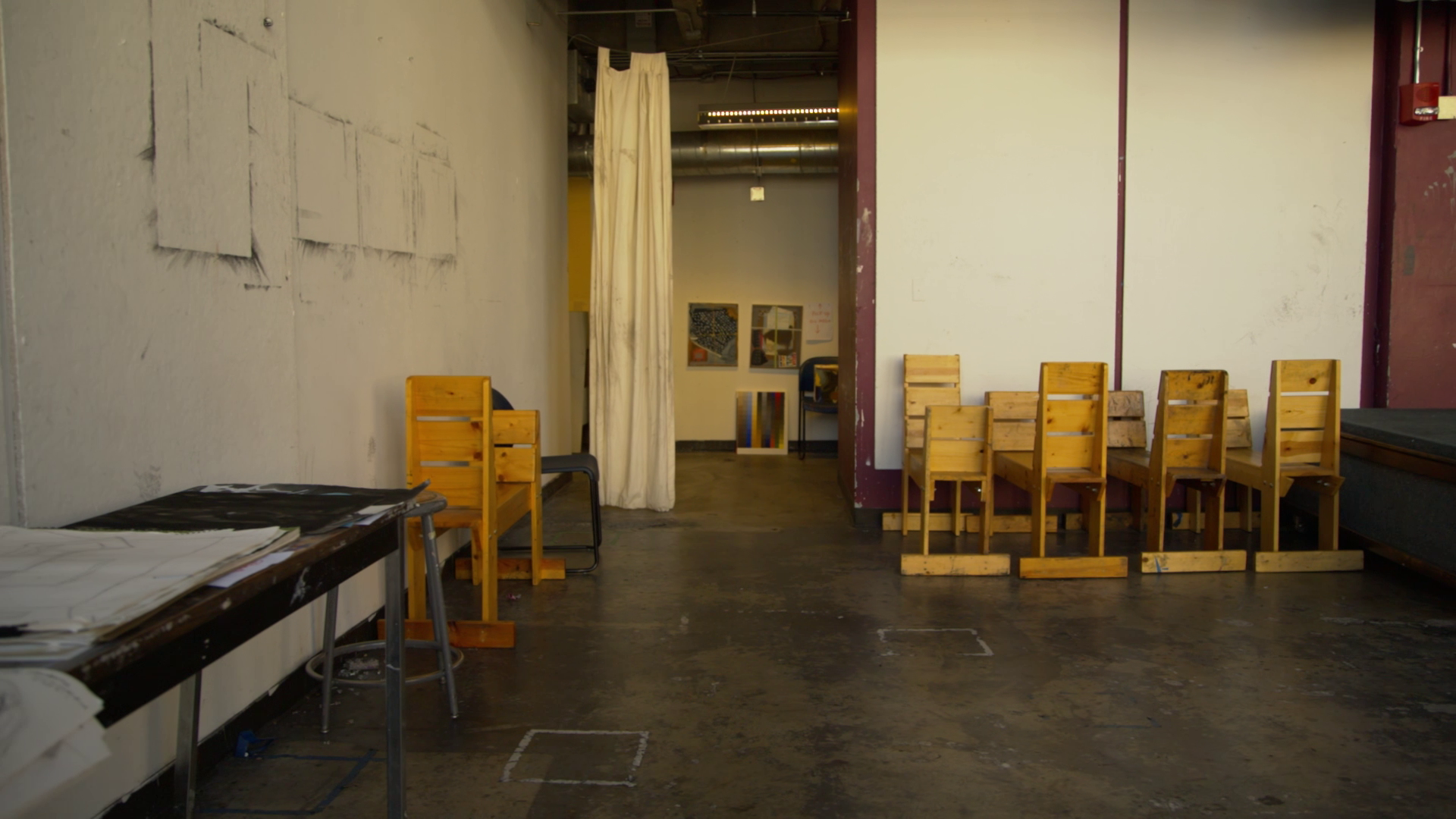Institute for Southern Contemporary Art (ISCA), now on the front page of Rhizome.org, is copresented with the New Museum as part of First Look: New Art Online.
The New Museum and Rhizome are proud to premiere Institute for Southern Contemporary Art (ISCA) by artists João Enxuto and Erica Love, an essayistic video that doubles as a promotional piece for the Institute of Southern Contemporary Art (ISCA), a proposed artist platform tailored to optimize the creation of art for market consumption. ISCA’s founding mission is totally preposterous, and yet, amid the onset of programs that analyze and rank art to quantify its future value (for instance, ArtRank and Art Advisor), it doesn’t hew too far from the current ways in which art is considered in terms of its financial potential.
Through sweeping shots that track impossibly between skyscrapers and above monuments, the style of the video approximates the nonhuman perspective of the algorithms that are at its thematic core. Notably, most of the scenes are devoid of people and urban life: block upon city block appear unpopulated, and the facilities of ISCA, including artist studios and the massive, labyrinthine supercomputer that, as the narrator describes, “analyzes and models the flow of art markets,” are equally empty, as if to imply a withering importance of the hand—or, even, the body—in the production and reception of contemporary art.

As in Enxuto and Love’s earlier work Art Project 2023 (2013), which depicts a future in which the Breuer building in New York has been razed by its new owner, Google, and replaced with a 3D replica in order to better interface with the Google Art Project, Institute for Southern Contemporary Art (ISCA) imagines a model for contemporary art that pushes certain probabilities toward logical, possible outcomes. ISCA is based, first, on the likelihood that climate disaster, in the form of rising sea levels, will compel the current southern center of contemporary art to migrate from Miami to Atlanta, a city where corporate funding has already made inroads into education through the Savannah College of Art and Design, a prestigious university that employs a franchise model (it has branches in Savannah and Atlanta). And, second, it draws on the increased use of algorithmic analysis in the art market. Recently a roster of programs, like ArtRank and Art Advisor, have been developed for the sale of art. ISCA dials the quantification process back earlier in the process of an artwork’s life to its production. As the voice of the automated narrator intones in the video, ISCA is “a grand experiment, part think tank and part experimental program to promote new terms for art production.” ISCA fellows make art that is geared toward maximal market favorability, while the aforementioned supercomputer captures data on their behaviors and creativity, in turn feeding a larger algorithmic system that shapes the production, reception, and sale of art.
Does ISCA represent a parodic dystopian future, or is it an increasingly conceivable model for the future of art? The narrator addresses the problem much like an entrepreneur would approach an investor: “Contemporary art is a multibillion dollar unregulated market with unclear criteria just waiting to be harnessed. And the ISCA algorithm is just the instrument to do it. It isn’t a perfect, deterministic model, but at ISCA, we didn’t get into the art game to just optimize for market performance. The goal of automating contemporary art is to become emancipated from it.” In the North American art market in 2016, whether via ISCA’s proposal or a different one still to emerge, perhaps “emancipation through the market” is our only option.
For more information, please visit contemporary.institute
IMAGES
João Enxuto and Erica Love, Institute for Southern Contemporary Art (ISCA), 2016 (still). HD video, sound, color; 16:20 min. Courtesy the artists.
SPONSORS
Rhizome’s 2015–16 commissions are made possible by the Jerome Foundation and by public funds from the New York City Department of Cultural Affairs and the New York State Council on the Arts.
Major support for First Look is provided by the Neeson / Edlis Artist Commissions Fund. Additional support is provided by the Toby Devan Lewis Emerging Artists Exhibitions Fund and the Andy Warhol Foundation for the Visual Arts.


